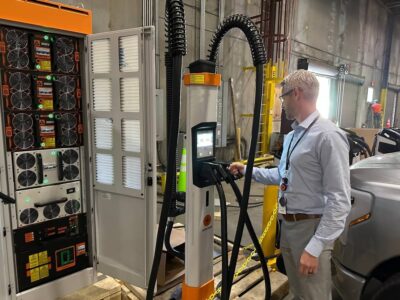As Maine prepares its maritime port system for the challenges and opportunities of the next decade, state leaders are working to ensure that the health of coastal communities remains at the forefront of their strategic priorities. Last year, the Maine Department of Transportation (MaineDOT) was awarded $1 million in federal funding via the Environmental Protection Agency’s Clean Ports Program. These subsidies were earmarked in 2022’s Inflation Reduction Act (IRA) and will be used in the design of studies that will test the viability of various emission reduction technologies, which could prove vital to the state’s efforts to purify its air supply.
The award was selected alongside 55 other applications and is categorized as a Climate and Air Quality Grant. MaineDOT will carry out the project in collaboration with the Maine Port Authority and CruiseMaine, a division of the state’s tourism office. These studies will serve as the starting point for Maine’s plans to reduce diesel emissions, which are released when docked cargo ships and cruise liners run their engines for extended periods of time. In a press release, U.S. Senator Angus King summarized the impetus behind these efforts: “Maine’s ports play an important role in our state’s […] economic and cultural successes. […] However, the equipment used to keep our ports open and operating are outdated and, oftentimes, discharging diesel air pollution, setting back our environmental goals. We owe it to our freight workers, port towns […], and future generations of Maine’s people, to curb this pollution through smart, responsible solutions.”
As Senator King noted, Maine’s port system provides the local economy with invaluable benefits, and the studies will be carried out in four locations that reflect this fact. The first three – Portland, Eastport, and Searsport – are the state’s largest centers of maritime commerce. According to MaineDOT’s website and The Observatory of Economic Complexity, these ports “collectively handle over 1.5 million tons of dry cargo” each year and contributed to the trade of over $3 billion worth of exports in 2023. The other anchorage, Rockland, is a popular cruise destination. Tourism is essential to Maine’s financial wellbeing, and the Cruiseline International Association estimates that the cruise industry provides more than $30 million in economic benefits for the state every year.
However, the advantages of Maine’s ports are slightly counteracted by their tendency to serve as originators of environmental pollution. The heavy ship traffic at these trade nodes leads to the dissemination of vast amounts of toxic pollutants into the air. When these vessels are docked, their noxious fumes are breathed in by the people nearby, leading to health complications. Additionally, the pollutants are known as a contributor to the changing climate as it is estimated that docked boats create over 4,000 tons of greenhouse gas emissions per year in Maine alone.

Photo Courtesy: Ian Taylor
Addressing such a large problem may seem daunting, but MaineDOT’s grant application lays out a winning strategy in comprehensive detail. Researchers will first conduct an emissions inventory at each port in order to ascertain the sources and amount of diesel pollution. They will then explore various methods of mitigating these toxins while testing the feasibility of technologies that will help the ports replace diesel fuel through the electrification of their equipment. MaineDOT has made a concerted effort to engage underrepresented stakeholders throughout the process. Leaders from the dockworkers and surrounding towns have been given many opportunities to provide input into the procedures.
Of all the electrification techniques that will be tested, MaineDOT has identified “shore power” as the most promising. This term refers to a device that plugs docked vessels directly into the electrical grid. As such, shore power allows these boats to operate while their engines are turned off, preventing the discharge of pollutive air toxins for the duration of their stay at port. MaineDOT favors shore power over other alternatives because they believe that this technology has the potential “to reduce […] polluting emissions by up to 98 percent.” However, this electrification technique is not without its own challenges. Cargo ships and cruise liners require vast amounts of energy, and shore power devices are expected to strain the electrical grid. As a result, MaineDOT is also hoping to expand energy storage systems in order to handle this increased power demand.

Photo Courtesy: Fré Sonneveld
With these difficulties in mind, the project’s supporters recognize federal funding’s crucial role in its implementation and are excited to begin laying the groundwork for a more sustainable future in Maine. In the aforementioned press release, Senator King echoed these sentiments and praised the role of the IRA helping improve the ports: “This grant from the Environmental Protection Agency’s Clean Ports Program is a step in the right direction and will have tangible impacts up and down our coastline. I’m glad to see the Inflation Reduction Act continue to make significant investments in our port communities and clean energy infrastructure, and look forward to seeing how this legislation continues to support Maine and America.”





